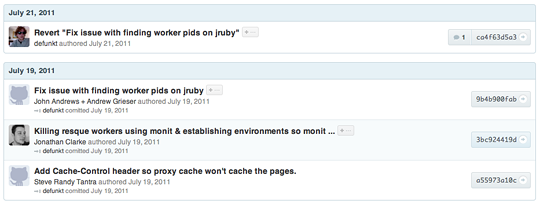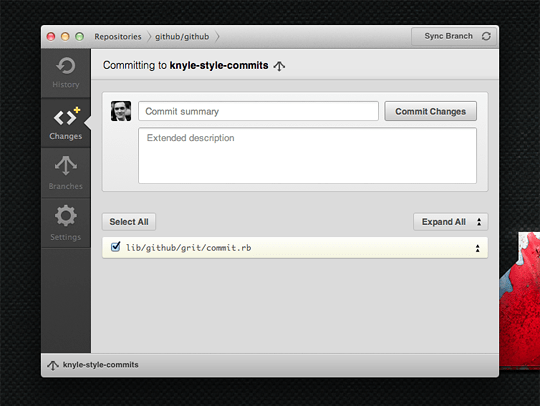Shiny new commit styles
We just rolled out some redesigned commit blocks all over the site. They look a bit like this: There’s all kinds of nice additions — notably, we’ll show you the…
We just rolled out some redesigned commit blocks all over the site. They look a bit like this:


There’s all kinds of nice additions — notably, we’ll show you the full commit message anywhere a commit is displayed (with the +… button).
But the biggest change you’ll see is that we’ve started embracing the model for Git commit messages — a one line summary followed by an optional description. Tim Pope wrote about proper git commit messages a long while ago.
The gist of a great commit message is this:
Capitalized, short (50 chars or less) summary
More detailed explanatory text, if necessary. Wrap it to about 72
characters or so. In some contexts, the first line is treated as the
subject of an email and the rest of the text as the body. The blank
line separating the summary from the body is critical (unless you omit
the body entirely); tools like rebase can get confused if you run the
two together.
Write your commit message in the present tense: "Fix bug" and not "Fixed
bug." This convention matches up with commit messages generated by
commands like git merge and git revert.
Further paragraphs come after blank lines.
- Bullet points are okay, too
- Typically a hyphen or asterisk is used for the bullet, preceded by a
single space, with blank lines in between, but conventions vary here
- Use a hanging indentIf you follow these rules, your commit messages are going to look great on GitHub. And if not, we’ll try our best to make them look good anyway.
Of course, if you’re using GitHub for Mac, we do all of this for you. Just type in the fields and we’ll create a properly formatted message for you.

Hope you guys enjoy!
Written by
Related posts

The future of AI-powered software optimization (and how it can help your team)
We envision the future of AI-enabled tooling to look like near-effortless engineering for sustainability. We call it Continuous Efficiency.

Let’s talk about GitHub Actions
A look at how we rebuilt GitHub Actions’ core architecture and shipped long-requested upgrades to improve performance, workflow flexibility, reliability, and everyday developer experience.

GitHub Availability Report: November 2025
In November, we experienced three incidents that resulted in degraded performance across GitHub services.